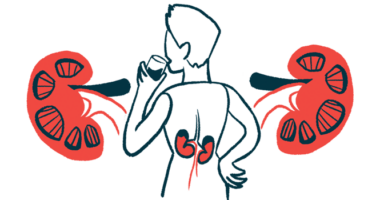Brain damage from lack of blood supply detected in man with aHUS: Case report
Treatment with Soliris resolved patient’s neurological symptoms

Areas of brain damage caused by a lack of blood supply were found in a patient with atypical hemolytic uremic syndrome (aHUS), a case study reports.
Treatment with Soliris (eculizumab) ultimately resolved the patient’s neurological symptoms. According to the authors, the case shows this type of brain damage may be a manifestation of aHUS.
The case study, “Ischemic cerebrovascular complications with initial presentation of genetic atypical hemolytic uremic syndrome,” was published in the Journal of Stroke & Cerebrovascular Diseases.
In aHUS, blood clots forming in small blood vessels can damage organs, especially the kidneys. Other hallmark features of the disease include low platelet counts (thrombocytopenia) and red blood cell destruction (hemolytic anemia).
In about 10% of cases, there is brain and spinal cord involvement, with patients having symptoms like headaches, double vision, irritability, drowsiness, seizures, paralysis, stroke, and coma.
According to researchers at the Cleveland Clinic in Ohio, brain damage caused by a lack of blood supply occurring alongside aHUS hasn’t been described in adults.
Lack of blood supply leads to brain damage
In this report, a 46-year-old man went to a clinic with partial paralysis of both legs (paraparesis) and lightheadedness. He had a long history of high blood pressure and type B aortic dissection, a tear in the major blood vessel that transports blood from the heart to the body.
Lab tests showed smaller than normal red blood cells, thrombocytopenia, and elevated creatinine, a sign of kidney dysfunction. He soon developed generalized weakness and was sent for brain imaging.
A MRI scan showed multiple ischemic infarcts, areas of tissue damage in the brain caused by a lack of blood supply. Additional tests suggested microangiopathic hemolytic anemia, or red blood cell destruction within the small blood vessels accompanied by thrombocytopenia.
He was started on dialysis due to poor kidney function and a kidney biopsy showed signs of blood clots in small vessels with mild scarring, suggesting aHUS.
Blood test results were consistent with an overactive complement pathway, a part of the immune system implicated in aHUS. Genetic testing also revealed a mutation in the CFHR1 gene.
The man was started on Soliris and his kidney function improved. Dialysis was discontinued and no signs of heart rhythm abnormalities were seen. After rehabilitation, his neurological symptoms fully resolved, and there have been no signs of brain blood vessel disease over two years with Soliris maintenance treatment.
“Acute multifocal multi-territorial ischemic infarcts and systemic thrombotic microangiopathy may be a manifestation of aHUS, and with associated genetic mutation, even in adult population,” the researchers wrote.







